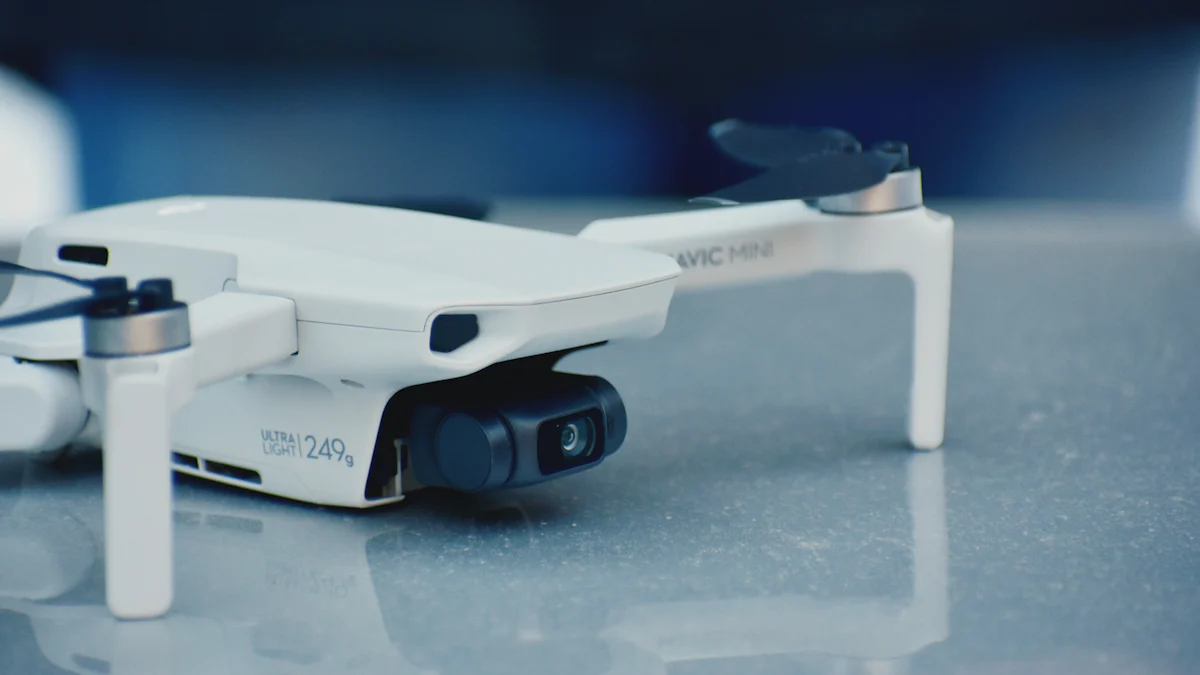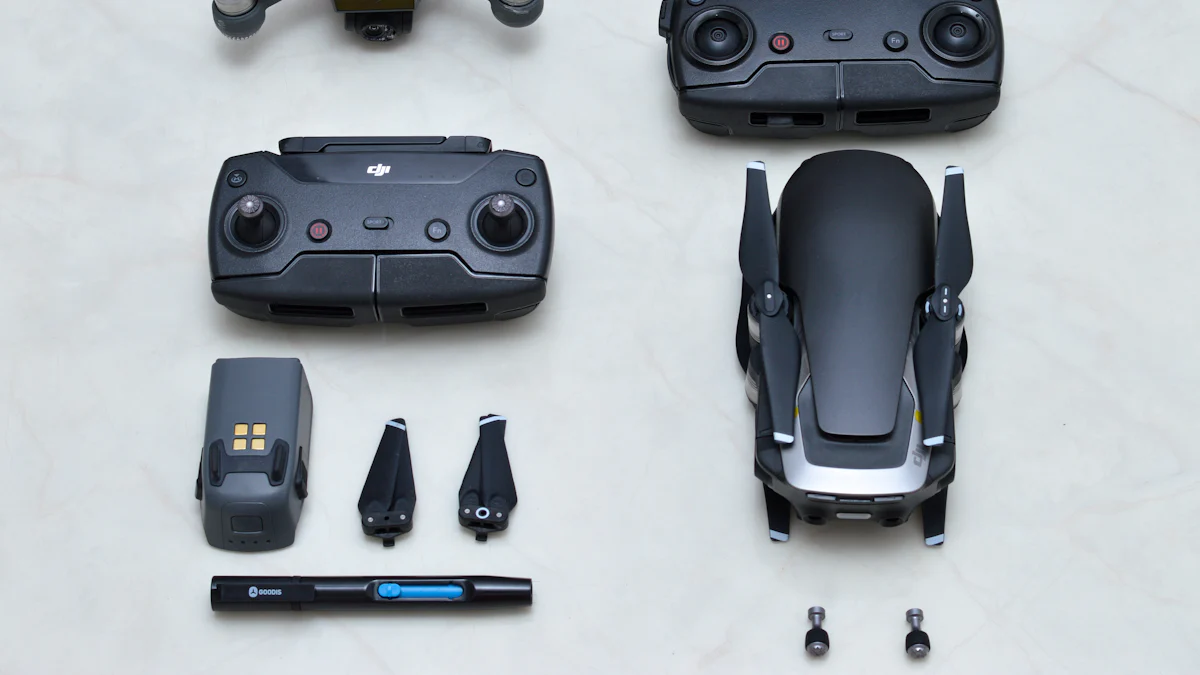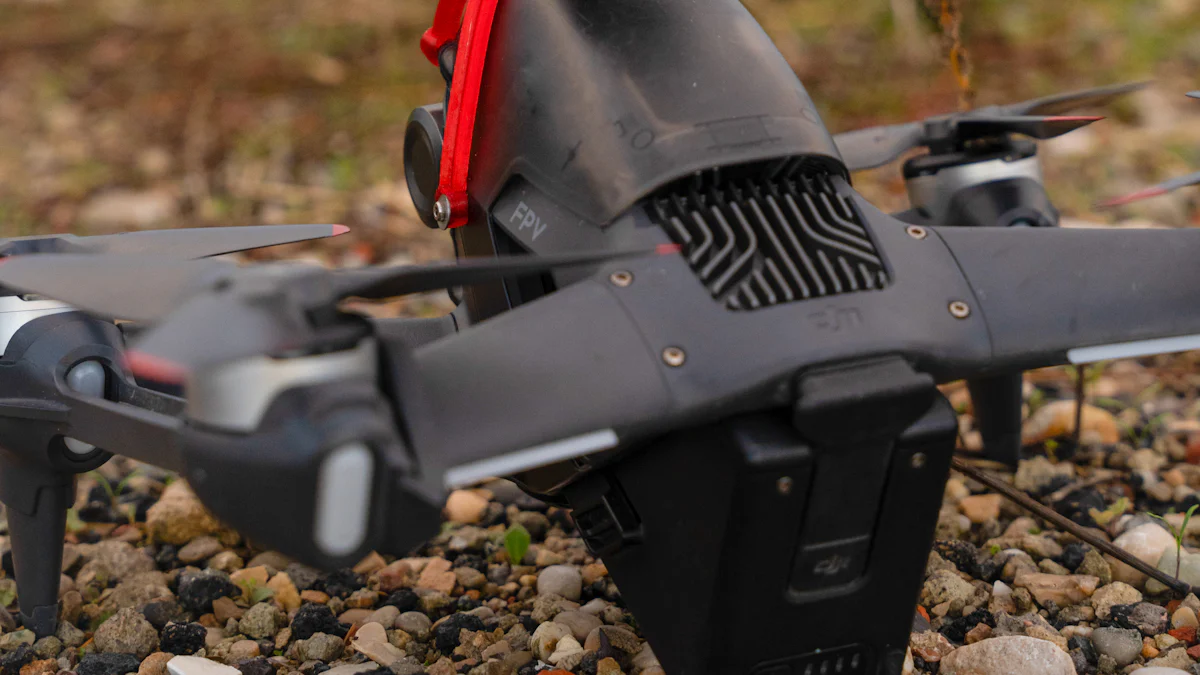Unlock the Secrets: Installing iSun Analog FPV Thermal Camera on Drones

In the realm of drone technology, thermal cameras play a pivotal role in enhancing operational efficiency and safety measures. The iSun Analog FPV Thermal Camera stands out as a cutting-edge solution, offering unparalleled thermal imaging capabilities for drone enthusiasts. Throughout this blog, we will delve into the intricacies of how to put on thermal camera on drones, specifically focusing on the installation process of the remarkable iSun analog FPV thermal camera.
Unpacking and Preparing

Unpacking the Camera
Upon receiving the iSun Analog FPV Thermal Camera, it's essential to handle the unpacking process with care. The packaging of this innovative camera is designed to ensure the safety of its components during transit. As you carefully open the box, you will unveil a world of cutting-edge technology tailored for thermal imaging enthusiasts.
Check for all Included Accessories
Within the packaging, meticulously inspect for all the included accessories that accompany the iSun Analog FPV Thermal Camera. These accessories are crucial for optimizing the functionality and performance of your thermal imaging setup. From cables to mounting tools, each accessory serves a specific purpose in enhancing your overall experience with this advanced camera system.
Identifying Mounting Points
Before proceeding with the installation process, it's vital to identify stable mounting points on your drone. These mounting points should be strategically located to ensure optimal positioning of the thermal camera during flight operations. By selecting secure mounting points, you guarantee stability and minimize any potential disruptions while capturing thermal imagery.
Ensure They Can Support the Camera's Weight
As you pinpoint suitable mounting locations, assess whether these points can adequately support the weight of the iSun Analog FPV Thermal Camera. Ensuring that the mounting points have sufficient load-bearing capacity is essential for maintaining balance and stability during drone flights. By verifying this aspect, you safeguard both your equipment and aerial photography endeavors.
February Considerations
In regions where February brings distinct weather conditions, it's imperative to consider how these factors may impact your drone operations with a thermal camera onboard. Adverse weather elements can affect visibility and flight performance, highlighting the importance of weather-proofing all components associated with your thermal imaging setup.
Mention Any Specific Considerations for February Weather Conditions
During February, varying temperatures and precipitation levels can pose challenges for drone pilots utilizing thermal cameras. It's advisable to take precautions such as insulating sensitive components against cold temperatures or moisture exposure. By addressing these considerations proactively, you ensure uninterrupted functionality and longevity of your thermal imaging equipment.
Mounting the Camera

Attaching the Camera
When it comes to attaching the camera to your drone, precision is key. Begin by selecting the designated mounting points identified earlier during the preparation phase. Securely fasten the iSun analog FPV thermal camera to these points using the provided mounting tools. It's crucial to ensure a tight and stable attachment to prevent any potential movement or detachment during flight operations.
Securely fasten the camera to the drone
To securely fasten the camera, follow these steps:
Use the appropriate screws and brackets for a secure fit.
Double-check the tightness of each connection point.
Avoid over-tightening to prevent damage to both the camera and drone body.
Double-check the attachment
After attaching the camera, it's essential to double-check the attachment before takeoff:
"Ensuring a proper attachment is vital for uninterrupted thermal imaging during flight."
Adjusting the Angle
Achieving optimal thermal imaging results requires adjusting the camera angle correctly. By positioning the camera at an ideal angle, you enhance its ability to capture clear and accurate thermal footage. This adjustment plays a significant role in maximizing your drone's surveillance capabilities and ensuring precise data collection.
Adjust the camera angle for optimal thermal imaging
To adjust the camera angle effectively:
Use a level tool to ensure a straight alignment.
Test different angles before securing the final position.
Consider factors such as sunlight direction for glare reduction.
Ensure clear and accurate footage
Maintaining clear and accurate footage relies on proper angle adjustments:
Regularly check and readjust as needed based on environmental conditions.
Opt for wider angles for panoramic views or narrower angles for detailed inspections.
iSun Analog FPV Thermal Camera
The iSun analog FPV thermal camera boasts an array of features that elevate drone operations to new heights. From advanced thermal sensors to real-time image transmission capabilities, this cutting-edge device revolutionizes aerial surveillance tasks with unparalleled precision.
Discussing Features of iSun Analog FPV Thermal Camera
Key features of iSun analog FPV thermal camera include:
High-resolution thermal imaging for enhanced visibility.
Lightweight design that minimally impacts UAV quadrocopters' performance.
User-friendly interface with intuitive controls for seamless operation.
Highlighting Benefits for Drone Operations
The benefits of integrating an iSun analog FPV thermal camera into your UAV operations are manifold:
"Enhance your surveillance capabilities while maintaining operational efficiency with iSun's innovative technology."
By leveraging these features and benefits, drone enthusiasts can unlock a world of possibilities in aerial reconnaissance and data acquisition.
Connecting and Calibrating
Connecting the Cables
As the installation process progresses, the next crucial step involves connecting the necessary cables to seamlessly integrate the iSun Analog FPV Thermal Camera with your drone. This pivotal connection ensures a smooth flow of data and power between the camera and the UAV, facilitating uninterrupted thermal imaging operations.
Connect the Necessary Cables to the Drone
To establish a reliable connection:
Begin by identifying the corresponding ports on both the camera and drone.
Use high-quality cables provided with the iSun analog FPV thermal camera for optimal performance.
Follow a systematic approach as outlined in the manufacturer's instructions to avoid any connectivity issues.
By adhering to these steps, you guarantee a secure and efficient link between your drone and thermal camera, laying a solid foundation for successful aerial surveillance missions.
Powering On
Once all cables are securely connected, it's time to power on both your drone and the iSun Analog FPV Thermal Camera. This critical phase initiates the functionality testing process, allowing you to verify that all systems are operational before taking flight.
Power On the Drone and Camera
Follow these steps to power up your equipment:
Activate your drone's power source according to its standard procedure.
Turn on the iSun analog FPV thermal camera using its designated power button.
Verify that both devices are receiving power signals for seamless communication.
By synchronizing the power-up sequence of your drone and thermal camera, you ensure synchronized operation during aerial missions, enhancing overall efficiency and data accuracy.
Calibrating the Camera
To optimize temperature readings and enhance thermal imaging accuracy, calibrating your iSun Analog FPV Thermal Camera is essential. Calibration fine-tunes sensor sensitivity levels, ensuring precise data capture during surveillance activities.
Calibrate the Camera for Accurate Temperature Readings
The calibration process involves:
Accessing the camera's settings menu to locate calibration options.
Utilizing different color palettes based on environmental conditions for optimal image interpretation.
Following guidelines from iSun Analog FPV Thermal Camera User Manual for accurate calibration procedures.
By meticulously calibrating your thermal camera, you equip yourself with reliable temperature readings essential for informed decision-making during surveillance operations.
Incorporating these meticulous steps into your installation routine guarantees a seamless integration of cutting-edge technology into your drone operations. By following manufacturer guidelines and leveraging real-time data capabilities mentioned in iSun Analog FPV Thermal Camera Real-Time Data, you elevate your aerial reconnaissance endeavors to new heights of precision and efficiency.
Testing and Maintenance
Performing a Test Flight
Before embarking on operational missions, it is imperative to conduct a test flight to validate the performance of your drone equipped with the iSun Analog FPV Thermal Camera. This crucial step allows you to assess the functionality of the thermal imaging system under real-world conditions and make any necessary adjustments for optimal results.
Conduct a test flight to verify performance
During the test flight:
Ascertain that the camera captures thermal images accurately and in real-time.
Evaluate the transmission quality of thermal data from the camera to your ground station.
Verify that all components are functioning seamlessly, including power supply and connectivity.
By meticulously scrutinizing these aspects during test flights, you ensure that your drone is well-equipped for successful surveillance operations in various environments.
Regular Maintenance
To uphold peak performance and longevity of your thermal imaging setup, regular maintenance practices are essential. By incorporating routine inspections and cleaning procedures into your maintenance regimen, you safeguard the efficiency and reliability of your aerial surveillance equipment.
Regularly inspect the camera
Regular inspections involve:
Checking for any signs of wear or damage on the camera body.
Verifying that all cables are securely connected without any fraying or loose connections.
Ensuring that the lens remains free from debris or scratches that could affect image quality.
By conducting thorough inspections before each flight, you mitigate potential risks and maintain uninterrupted functionality of your thermal imaging system.
Clean the lens and check for damage
Cleaning procedures include:
Using a microfiber cloth to gently wipe off dust or smudges from the lens surface.
Inspecting for any cracks or scratches on the lens that may impair image clarity.
Employing lens-safe cleaning solutions for stubborn stains while avoiding abrasive materials.
By adhering to proper cleaning techniques, you preserve the optical integrity of your camera lens, ensuring crisp thermal imagery during surveillance missions.
Detection Capabilities
The detection capabilities of the iSun Analog FPV Thermal Camera extend beyond conventional surveillance applications, offering unparalleled insights across diverse fields. From enhancing search and rescue operations to optimizing industrial inspections, this advanced thermal imaging technology transcends boundaries to deliver exceptional performance where it matters most.
Highlighting detection capabilities of the camera
Key features include:
Swift identification of heat signatures in challenging environments.
Real-time analysis for proactive decision-making in critical scenarios.
Seamless integration with drones for enhanced aerial reconnaissance capabilities.
By leveraging these detection capabilities, users can harness actionable insights from thermal data, revolutionizing their approach to surveillance tasks across industries.
Discussing its applications in various fields
The versatility of thermal imaging technology finds practical utility in multiple sectors:
Search and Rescue Operations: Enabling rapid identification of heat sources in emergency situations for swift response strategies.
Industrial Inspections: Facilitating efficient monitoring of equipment temperature variations to prevent malfunctions or breakdowns.
Agricultural Monitoring: Enhancing crop health assessments by detecting anomalies through thermal analysis methods.
Through strategic deployment in diverse fields, FPV thermal cameras like iSun's analog model redefine operational standards by providing invaluable data-driven insights tailored to specific industry requirements.
In wrapping up the installation journey of the iSun Analog FPV Thermal Camera on drones, it's essential to reflect on the meticulous steps undertaken. From unpacking and identifying mounting points to connecting cables and calibrating the camera, each stage contributes to a seamless integration process. The significance of proper installation and regular maintenance cannot be overstated, ensuring sustained performance and longevity of your thermal imaging setup. By adhering to these guidelines diligently, drone enthusiasts can elevate their aerial surveillance capabilities with precision and efficiency.
See Also
Optimizing Drone Surveillance: A Guide to iSun Thermal Cameras
Enhancing Drone Efficiency: The iSun Thermal Camera Operation Manual
Becoming an Expert in Drone Monitoring: Utilizing iSun Thermal Cameras
Perfecting Drone Monitoring: Leveraging Analog FPV Thermal Camera
The Best Drone-Mountable Thermal Cameras with iSun Analog Tech
Contact Us: Ms. Coco Huang
E-mail: sales@iasun.cn
WhatsApp/Wechat: +86 13510421923

